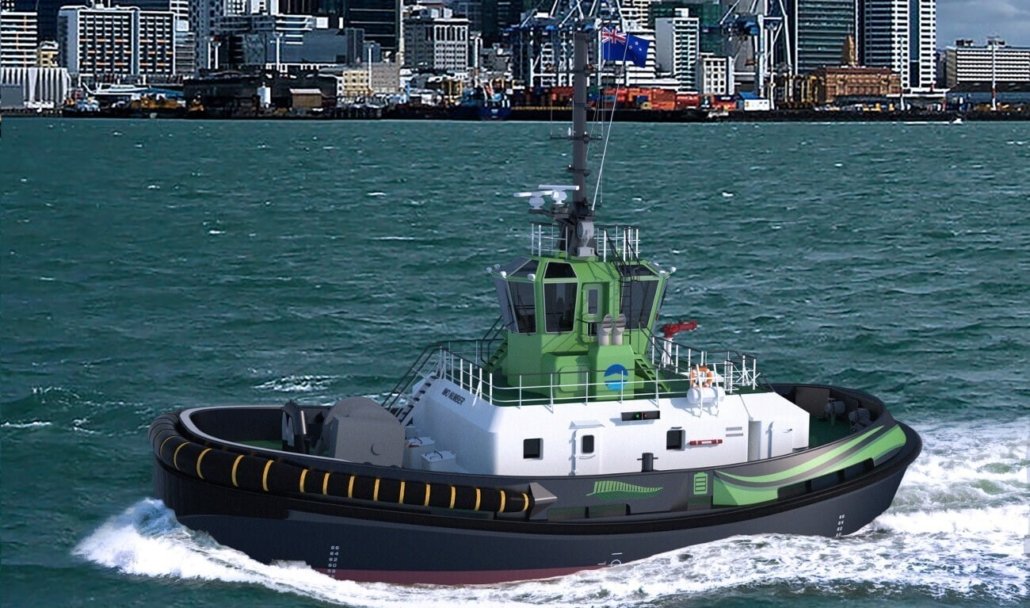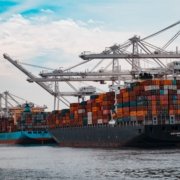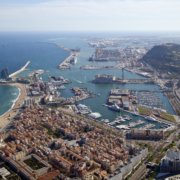The road towards sustainable port operations
This month, in anticipation of our annual summer school on port operations, we thought we would tackle the topic of sustainable ports, with a break down of practical measures being taken by ports to reach net-zero emissions in the next three decades.

Written by: Lidia Slawinska, Consultant
In recent years, smart and sustainable have become interchangeable when talking about the future of transport. With the goal of working towards a more connected, intelligent and sustainable world, port authorities and port operators across the globe have been actively working in line with the UN’s 17 Sustainable Development Goals which work to improve financial and social inclusion, support humanitarian efforts, facilitate access to education and to health services, and to combat climate change. All partners have agreed that this is necessary to help build a sustainable world for future generations – and actors involved in transport operations have a particularly large part to play.
The IMO has predicted in recent years that maritime transport will continue to increase over the next decades, culminating with a rate 250% higher in 2050 than what we see today. Knowing that maritime transport already contributes nearly 3% of the world’s greenhouse gas emissions, it is evident that the industry needs to change to ensure that the increased rate does not counterbalance any global sustainability efforts.
Ports play a key role in the development and maintenance of efficient and supply chains, and therefore they will also play a key role in their redesigns to make them sustainable in the effort to achieve net zero emissions of shipping operations by 2050. One way that ports have started to do that is to invest in electrification.
Ports as energy hubs

Container operations at the Port of Rotterdam
The concept of having ports used as energy hubs for the shipping world is an enticing one. Imagining that the infrastructure could serve as a sustainable operation, with electrified terminals, reach stackers, loading cranes, etc., and then knowing that the onshore power supply points could also help maintain low emissions of vessels in port and at sea is very appealing. Digitalisation will be the enabler of this process of bringing electricity closer to the different intermodal transport modes through ports – through electrification processes – and will open doors to new innovative solutions, alternative business strategies and intelligent controls. Connected carries, cargo and people will make sure that transport transactions are transparent, traceable, and trustworthy. Ports can serve as the energy hubs that make all of this possible.
Electrification
Electrification is already spreading through the shipping world. It can be done to ships to make sure that they consume fewer fossil fuels and therefore lower their carbon footprint. Other forms of transport, as well as the supporting infrastructure provided by ports, if electrified, can substantially help increase the sustainability of maritime operations. As an added bonus, electrified ports also emit lower noise pollution, therewith improving their relationships with the neighbouring cities.
Electrification is also inextricably linked to sustainability. As more and more carriers invest in either fully electric or hybrid motors, ports are expected to offer onshore power supply stations, which in turn puts more demand on the creation of relevant infrastructures. As a result, those ports that invest in the innovative infrastructures transform into important nodes with substantial power needs which would need to be taken from a nearby electricity grids. This is because visiting ships, regardless of the duration of their stays in the port, will want to recharge their batteries to make sure that they have enough energy for subsequent transport legs all the while getting energy to support their stays in the ports themselves. As a result, ports will become large electricity consumers, ready to cater for both large and alternating load requirements – all of which will depend on the stability of the electricity supply.
One example of a European port that has successfully incorporated electrification efforts is that of the Port of Tyne in the Northeast of England. Its electrification projects, among other initiatives that helped it win the UK Clean Maritime Operator Award in 2020, have contributed to the cutting of the port’s fossil fuel consumption by 260,000 litres, reducing energy use by 2.3 million kWh and eliminating more than 1,500 tonnes of carbon dioxide.
New technologies moving ports closer to full electrification
Alongside onshore power supply points, there are other technological developments that are helping ports on the path towards full electrification. One such development was recently announced by Hyster Europe, during the TOC Global Showcase. Having spent years working on zero-emission container handling solutions, Hyster’s catalogue of port equipment that utilises lithium-ion batteries and other fuel cell technologies got more extensive. Having partnered up with Capacity Trucks, Hyster is now working on the creation of electric, hydrogen and automation ready terminal tractors. The most interesting part of these developments is the use of hydrogen fuel cells – something that the company has been investing in and working on since 2017.
The Ports of Auckland Ltd is another example of bringing ports closer to the innovative and sustainable solutions of tomorrow. With an impressive goal of reaching zero emissions by 2040, the port operator has incorporated a wide range of solutions including automated straddle carriers and expanding the terminal’s overall annual capacity. Alongside this, the port has invested in fully electric tugboats, built by Damen Shipyards and powered by Echandia’s E-LTO batteries, which can sustain more than 70 tonnes of bollard pull.

Credit: Damen Shipyards
More efficient port management
Apart from investing in new technologies to reach their sustainability goals, ports also need to optimise their port processes and operating procedures to improve turnaround time, decrease time spent idling in ports, and therewith improving the overall maritime transport operation. Digitalisation is key in this – as ensuring smooth and reliable digital connectivity between all transport operators can only help make the planning and follow-throughs of any processes more efficient.
5G is already being tested to try to increase the speed of data exchanges between different transport parties, with the Internet of Things, AI, and digital twins set to help increase the overall reliability of port operations, and therewith contribute towards efficient port management models.
Concluding thoughts
It is not a secret that the maritime sector accounts for around 3 percent of the word’s total GHG emissions. As most the world’s transport relies on the maritime route (and the current trend shows the number increasing significantly in the next 3 decades), it is imperative for any actors involved in maritime operations to make sure that fossil fuels are eliminated (to the extent that it is possible) and substituted (or complemented by) renewable alternatives. As maritime transport does not exist without ports, bringing sustainability to them seems like a necessity to help greenify the sector. Electrification and digitalisation are two such steps that ports can take to work towards that goal – and therewith ensure a clean and green supply chain that supports our globalised world.
Sources:
- https://www.maritime-executive.com/editorials/sustainable-ports-as-energy-hubs
- https://blog.kencogroup.com/7-green-logistics-trends
- https://www.ship-technology.com/features/green-team-ports-leading-shipping-sustainability-drive/
- http://www.handyshippingguide.com/shipping-news/another-harbour-weighs-in-to-clean-emissions-through-electrification_13692
- https://www.greenport.com/news101/energy-and-technology/moving-closer-to-electrification









